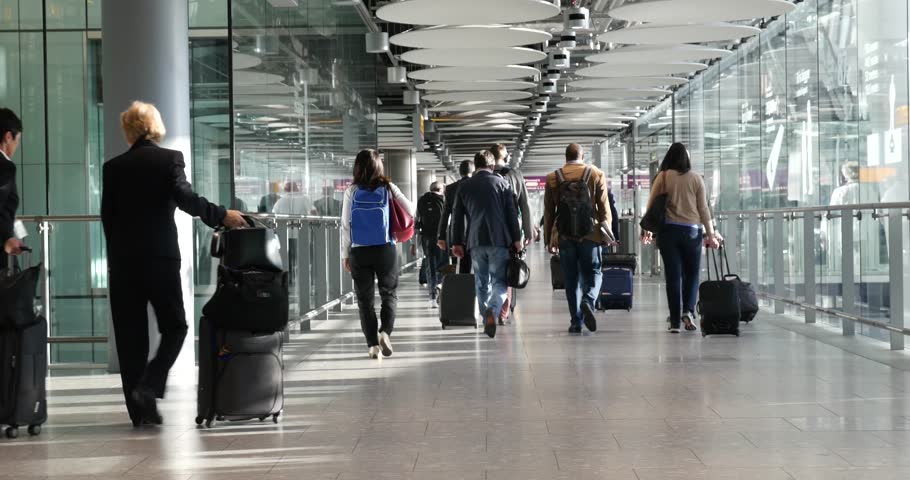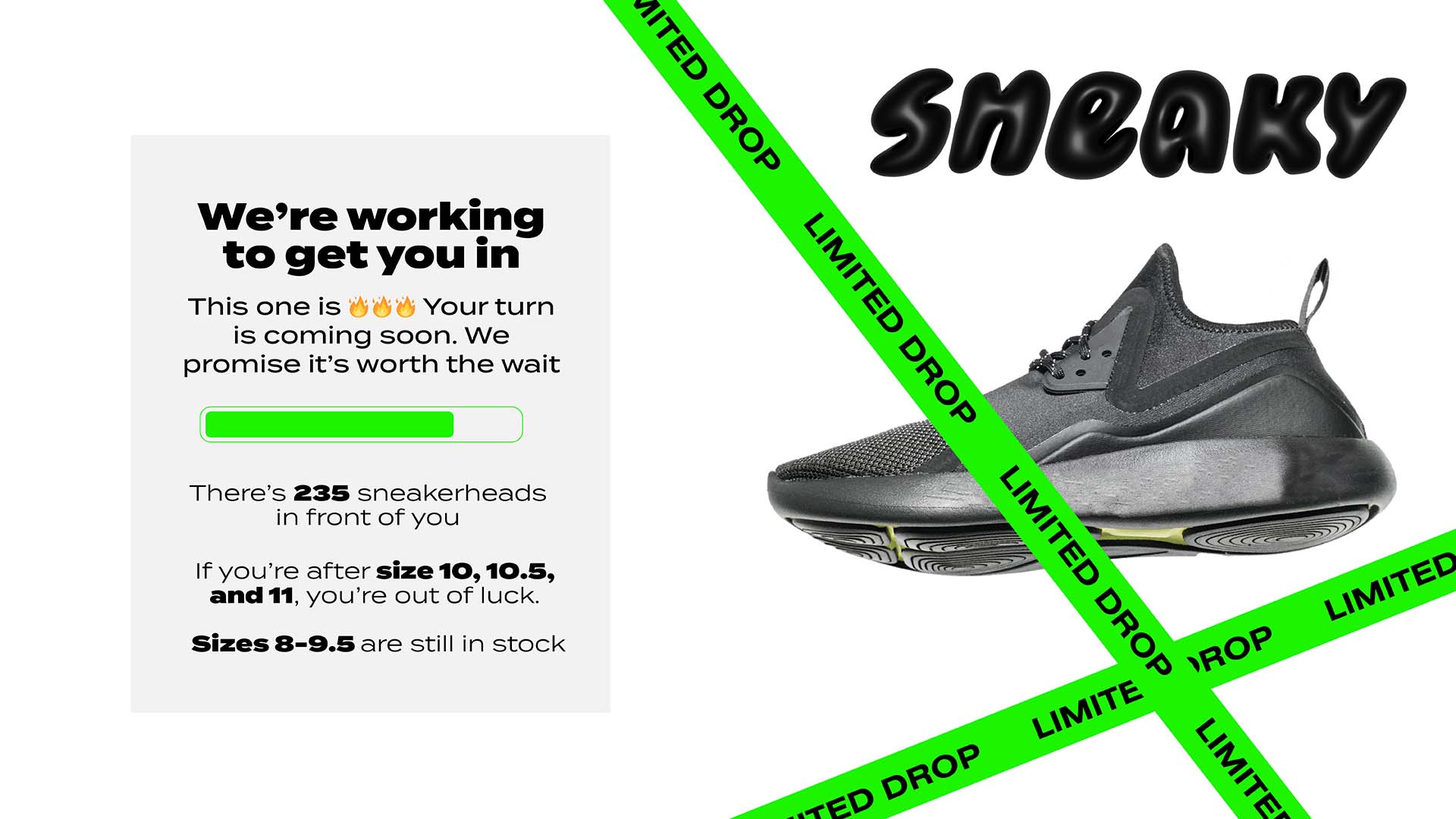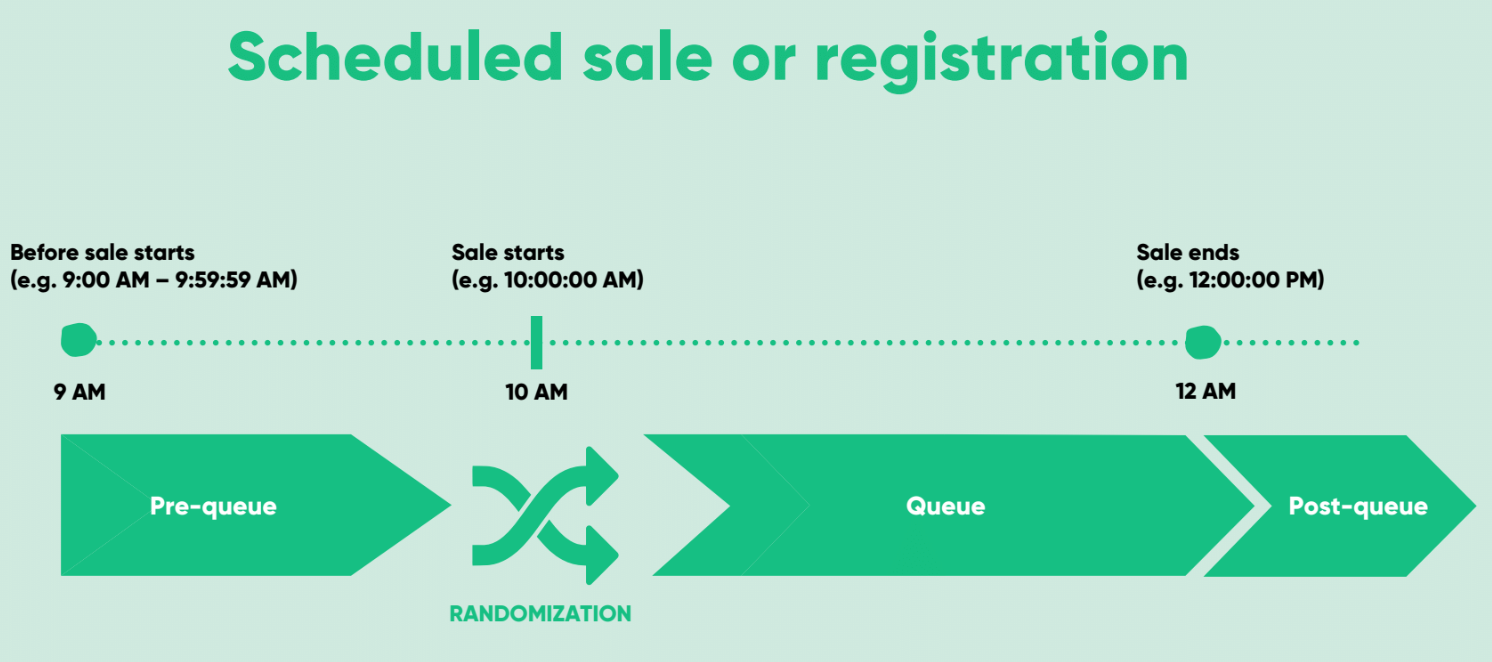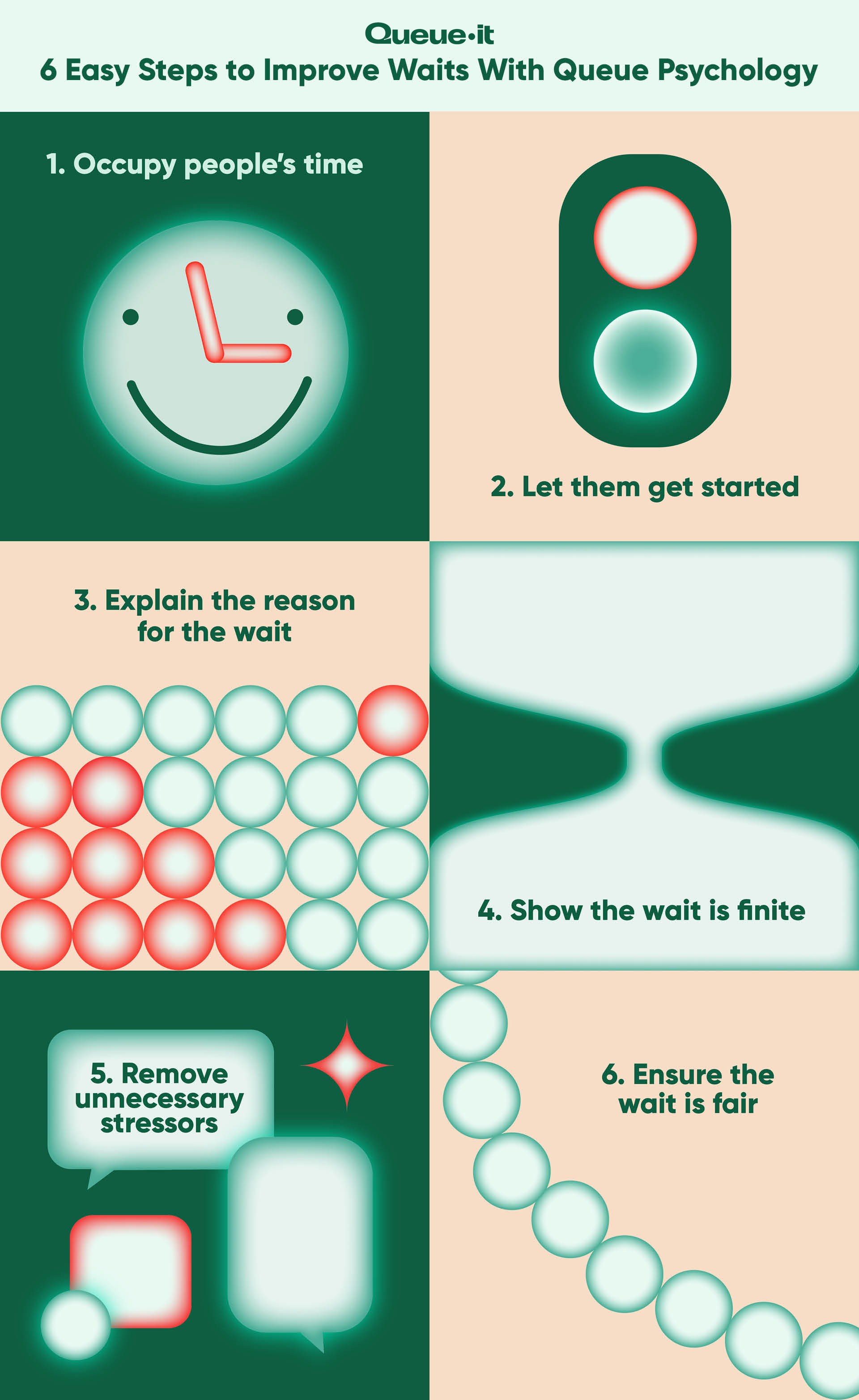The psychology of queuing revealed in 6 simple rules

Research shows that how people feel while waiting matters more than the length of the wait. By leveraging the insights of queue psychology, you can ensure that your customers' user experience is a positive one.
“Online queue”
These two simple words can send an otherwise rational person into an uproar online. Everyone stands in line in the physical world. But the Internet era has created assumptions that we can access whatever we want on-demand, 24/7. Many are startled to find that queues have moved online.
Lines are a fair—if disliked—way to deal with high demand in the physical world. Given the technical challenges of peak website traffic, lines serve the same useful purpose online, and aren’t going away anytime soon.
“People claim to hate wasting time,” says Queue-it co-founder Camilla Ley Valentin. “Yet many are willing to wait for their favorite Black Friday item or the latest Apple gadget.”
What queue psychology shows is that the waiting experience makes all the difference. For businesses, it’s critical to make the experience a good one.
The risk isn’t putting people in a queue. The risk is ignoring queue psychology and delivering a negative experience that loses customers and damages your brand.
What is it about waiting in line that tends to raise our blood pressure? What is it that differentiates a positive queuing experience from a poor one? The key is rooted in the psychology of queuing. And the answer might surprise you.
Table of contents
- What is queue psychology?
- A brief history of the psychology of queuing
- The 6 revealing rules of queue psychology
- Queue psychology infographic
Queue psychology is the study of people’s perceptions of and responses to queues, queuing, and waiting. It’s the psychology of waiting in line, of how people feel while waiting. And its influence is all around us.
Queue psychology is why music plays when you’re on hold with the bank.
It’s why the take-a-number system exists at bakeries and the DMV.
It’s why we have progress bars on computers, magazines in doctors’ waiting rooms, and mirrors in elevators.
The key finding of queue psychology is that it’s not the length of the line or the wait that matters most—it’s how people feel while waiting.
All the above everyday occurrences are designed to make waiting feel better. But before we get to how these tactics improve the experience of waiting, a quick history lesson is in order.
RELATED: How Do Virtual Waiting Rooms Turn Queuing Into a Positive User Experience?
Queues were first taken seriously as a research subject in the early 20th century, when Danish engineer A.K. Erlang tackled the problem of long wait times for telephones.
Erlang’s aim was to improve the efficiency of telephone queues to serve as many people as possible in the shortest amount of time. In the process, he founded the field of queuing theory.
But queuing theory was only about the efficiency of queues. It was about optimization and mathematics. It paid little attention to the actual psychology of making someone wait—that is, how people feel while waiting.
Fast forward to 1950s New York City. The problem of waiting in line materialized again. This time in the elevators of the city’s newly built skyscrapers.
As Queue-it CEO and co-founder Niels Henrik Sodemann explains in his video “Breaking Down the Psychology of Queuing” building managers realized that the problem wasn’t the wait duration itself. Rather, it was the perceived waiting time.
The solution?
Add floor indicators showing people the progress of the elevator and add floor-to-ceiling mirrors near the elevators to distract people while they waited.
These additions didn't change the wait time for elevators, but they made complaints about the wait time disappear. People didn’t mind waiting when they could see the elevator’s progress and distract themselves with fixing their hair and doing up their fly.
Similar queuing psychology hacks have since been used everywhere from airport baggage claims to doctor’s waiting rooms to supermarket checkout aisles.
All this goes to show that “often the psychology of queuing is more important than the statistics of the wait itself,” says MIT operations professor Richard Larson, also known as Dr. Queue.
From our experience, Harvard Business School professor David Maister has compiled the gold standard overview of the psychology of queuing.
In his article “The Psychology of Waiting in Lines” Maister outlines 6 cornerstone principles that determine customer experiences when waiting in a queue. These are equally applicable to physical or online waits. They should factor into any queue management.
RELATED: The Power of Anticipation Psychology & How to Use It for Ecommerce Marketing
Even if customers are in love with the product they’re queuing for, not providing a distraction during the wait can make it seem torturous.
This principle is why your doctor’s office has that old stack of magazines in the waiting room. They give you something to distract yourself with, to help you forget the fact that your doctor is 15 minutes behind schedule.
It’s also why the baggage pickup at airports is so far from where you get dropped off. That 20-minute walk to the other side of the airport is intentional. You don’t notice the long wait for the bags is because you spend half your wait time walking. And if you’re walking, you’re not waiting, right?

Just like these queue psychology examples, you can get creative with ways to engage with and occupy your customers while they wait:
- If callers are waiting to speak to your customer service, give them the chance to get called back when it’s their turn.
- If fans are waiting for an artist to perform, let them join in on a game of trivia using an app like Kahoot.
- If customers are waiting in an online queue, customize the queue page and embed videos or games.
Online queues actually have an advantage over physical queues in this sense, as customers aren’t limited by the need to stand in line.
A virtual waiting room can notify visitors when it’s their turn in line, so they can check email, tidy up the house, or do any number of things to occupy their time while waiting.
“Can I get you started with some drinks?” This simple question you’ve heard a hundred times at restaurants is an expert way to make your wait for service and food feel shorter. The same goes for things like bread baskets.
People who know they have to wait for something want to feel their wait starts ASAP. They want to get started.
This is why progress bars are so ubiquitous in computing. It shows people immediately that their wait has started—that progress is already happening.
That's why all online queues include progress bars, too. It shows a beginning and an end, and waiting becomes reconceptualized as progress.
If you’re running an online product launch, you can also let customers in the online queue read more about the product so they feel like they’ve started the buying process. Even better, give them a sneak peek of upcoming products.
Setting expectations is crucial to a good queuing experience.
If you’ve ever been on hold to a bank or airline, you’ll know there’s a massive difference between service providers that tell you “You’re 10th in line, your estimated wait time is 8 minutes”, and those who simply play that generic music on repeat.
When you know how long you’ve got to wait, you can plan around it. You can use the bathroom, start cooking dinner, or call back later because you have to go to work.
But with uncertain waits, you just sit there in a kind of purgatory, with no idea whether someone will serve you in a minute, or in an hour.
Communication is key because it helps set expectations. To give certainty, you should:
- Provide information on how many other people are waiting in line.
- Give an estimated waiting time.
If in doubt, it’s better to overestimate the wait than underestimate it. How an experience ends (known as the peak-end rule) greatly influences people’s assessment of the whole experience.
Disneyland are queuing experts. And they leverage the peak-end rule by not only providing estimated wait times at their parks, but actually setting these higher than the actual wait time.
This way not only do people know what to expect, they’re also delighted when their expectations are exceeded.
In this psychology of waiting example, Disneyland takes it’s “happiest place on earth” slogan seriously, using queue psychology to create “the happiest queues on earth.”
Humans look for explanations behind all things. If your friend or colleague is an hour late to a dinner, you're going to expect a good reason for why they made you wait.
The absence of explanation is not only frustrating, it feels downright rude.
Airline pilots know this well and will always include the reason for a delay (whether it’s the airline’s fault or not) instead of merely stating there is a wait.
Such explanations are even more critical in an online queue, where there are fewer contextual cues available to your visitors.
Saying your site is experiencing “technical difficulties” is a vague and unnerving description for visitors.
Make sure to provide a clear explanation of why your customers are in a queue (e.g. “Hi Sneakerhead! So that everyone has a fair shot at getting their hands on a pair of new sneaks, we’ve reserved a place in line for you in our virtual waiting room.”)
If possible, keep real-time communication flowing to your waiting customers to keep them up-to-date and remind them why there is a wait.

The perception of fairness has arguably the biggest impact on how we feel when we’re waiting in line. We’re constantly on guard to ensure no one cuts the line. Violations can be met with queue rage.
A first-in, first-out (FIFO) (or first-come, first-served) wait is the exemplar of fairness. Make sure your queue—whether online or physical—operates in this way.
RELATED: Customer Loyalty in Ecommerce: The Surprising Benefits of Fairness
If you’re operating an online queue, remember to address customers who arrive early.
For example, we’ve designed our virtual waiting room to place early visitors in a pre-queue with a countdown to the official start of the queued event. When the sale or registration begins, we assign a randomized queue number to all early visitors and then operate the queue in a first-in, first-out fashion. This ensures early visitors don’t benefit from arriving early and gives everyone who does a fair shot at being first in line.

Time moves slower when you’re stressed. That’s why expectation-setting, fairness, and distraction are so important to reducing perceived wait time.
Put yourself in your customers’ shoes. They really want the concert ticket or pair of sneakers they’re waiting in line for. That in itself is already anxiety-provoking.
Removing anything that could cause anxiety (e.g. warning visitors they only have a few minutes to complete their booking) is great. Preemptively addressing any anxieties, rational or not, is even better.
If your setup involves multiple queues, think again. A large portion of queue anxiety surrounds being unfairly overtaken by others, what Richard Larson calls “skips and slips”.
One serpentine line removes any need for your customers to make (and constantly reassess) a decision about choosing the “right line”.
You can drastically improve your customers' waiting experience by understanding the psychology of queuing. Use the infographic below as a reminder of the psychology of online queuing.
Don’t fail your customers; invest in improving the customer experience with Maister’s 6 rules of queue psychology.

(This blog has been updated since it was written in 2020).